|
Institute of History and Philology, Academia Sinica: 10 Animation Videos |
|
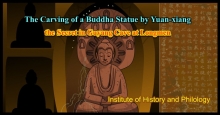 The Institute of History and Philology (IHP), Academia Sinica, has accumulated a huge amount of historical archives and collections, including archaeological data, language data, ethnological data, rare books, documents of Ming and Qing Dynasties, and stone and bronze rubbings. IHP has produced 10 animation videos so that viewers can get a glimpse of these treasures. .....
The Institute of History and Philology (IHP), Academia Sinica, has accumulated a huge amount of historical archives and collections, including archaeological data, language data, ethnological data, rare books, documents of Ming and Qing Dynasties, and stone and bronze rubbings. IHP has produced 10 animation videos so that viewers can get a glimpse of these treasures. .....
|
|
Read more...
|
|
|
Ceramics Digitization Procedures Guideline |
|
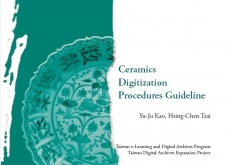 Apart from the ancient ceramics collected in museums, kiln sites from all over Taiwan are continuously creating ceramics with local features. While there is a need for ancient ceramic to be preserved via digital archives, the need is greater for ceramics with local features to be digitized to enable the world to comprehend the subtleties of the traditional techniques as well as the rich creativity of Taiwanese people. The purpose of this guideline is to integrate prior digitization experiences of domestic institutions; generalize reference guidelines for digitization work; and provide a set of standards for other institutions with ceramic collections when they join the ranks of digital archives, .....
Apart from the ancient ceramics collected in museums, kiln sites from all over Taiwan are continuously creating ceramics with local features. While there is a need for ancient ceramic to be preserved via digital archives, the need is greater for ceramics with local features to be digitized to enable the world to comprehend the subtleties of the traditional techniques as well as the rich creativity of Taiwanese people. The purpose of this guideline is to integrate prior digitization experiences of domestic institutions; generalize reference guidelines for digitization work; and provide a set of standards for other institutions with ceramic collections when they join the ranks of digital archives, .....
|
|
Read more...
|
|
String-Bound Book Digitization Procedures Guideline |
|
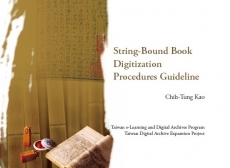 Ancient Chinese and Western books utilized string as binding material. In China, book pages, along with same-size front and back covers, were sewed together using strings. This method made it easier to browse a book and harder for a book to fall apart. The string-sewing method became common from the middle period of Ming Dynasty on. The “string-bound ancient books” referred to in the guideline are hand-written or printed books dated before 1911. Since these books are made of paper and string, they can easily be damaged and embrittled by natural disasters or over usage. It is all the more important to digitize them. .....
Ancient Chinese and Western books utilized string as binding material. In China, book pages, along with same-size front and back covers, were sewed together using strings. This method made it easier to browse a book and harder for a book to fall apart. The string-sewing method became common from the middle period of Ming Dynasty on. The “string-bound ancient books” referred to in the guideline are hand-written or printed books dated before 1911. Since these books are made of paper and string, they can easily be damaged and embrittled by natural disasters or over usage. It is all the more important to digitize them. .....
|
|
Read more...
|
|
Painting and Calligraphy Digitization Procedures Guideline |
|
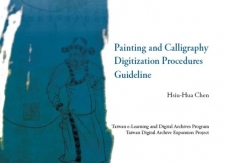 "Calligraphy" is the art of writing. The Chinese have a unique way of using ink and lines on paper to express the beauty of Chinese characters’ different forms and styles as well as the calligrapher’s sentiment. "Painting" uses the elements of dot, line, surface and color in a two dimensional space to express an image. “Painting and Calligraphy” as a phrase include calligraphy, prints, ink paintings, oil paintings, watercolor paintings, and other types of works; all are 2D visual arts. Therefore, the digitization procedure planned by this guideline treats paintings and calligraphy as 2D art works with relatively rich colors. .....
"Calligraphy" is the art of writing. The Chinese have a unique way of using ink and lines on paper to express the beauty of Chinese characters’ different forms and styles as well as the calligrapher’s sentiment. "Painting" uses the elements of dot, line, surface and color in a two dimensional space to express an image. “Painting and Calligraphy” as a phrase include calligraphy, prints, ink paintings, oil paintings, watercolor paintings, and other types of works; all are 2D visual arts. Therefore, the digitization procedure planned by this guideline treats paintings and calligraphy as 2D art works with relatively rich colors. .....
|
|
Read more...
|
|
Tags: earthenware | earthquake fish | shovel bug | tatala boat 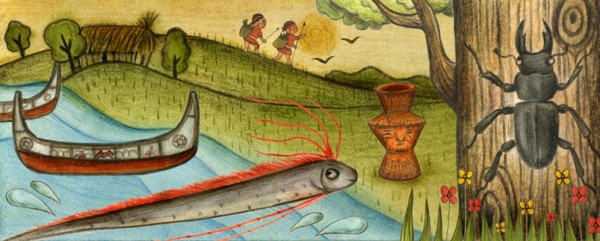
3D Exhibition of TEES ( Flash 10 required)
What is TEES? It stands for the four stories that we composed for you on the Tatala Boat, the Earthenware, the Earthquake Fish, and the Shovel Bug. Visit...
|
|
Read more...
|
|
|
<< Start < Prev 1 2 3 Next > End >>
|
|
Page 3 of 3 |